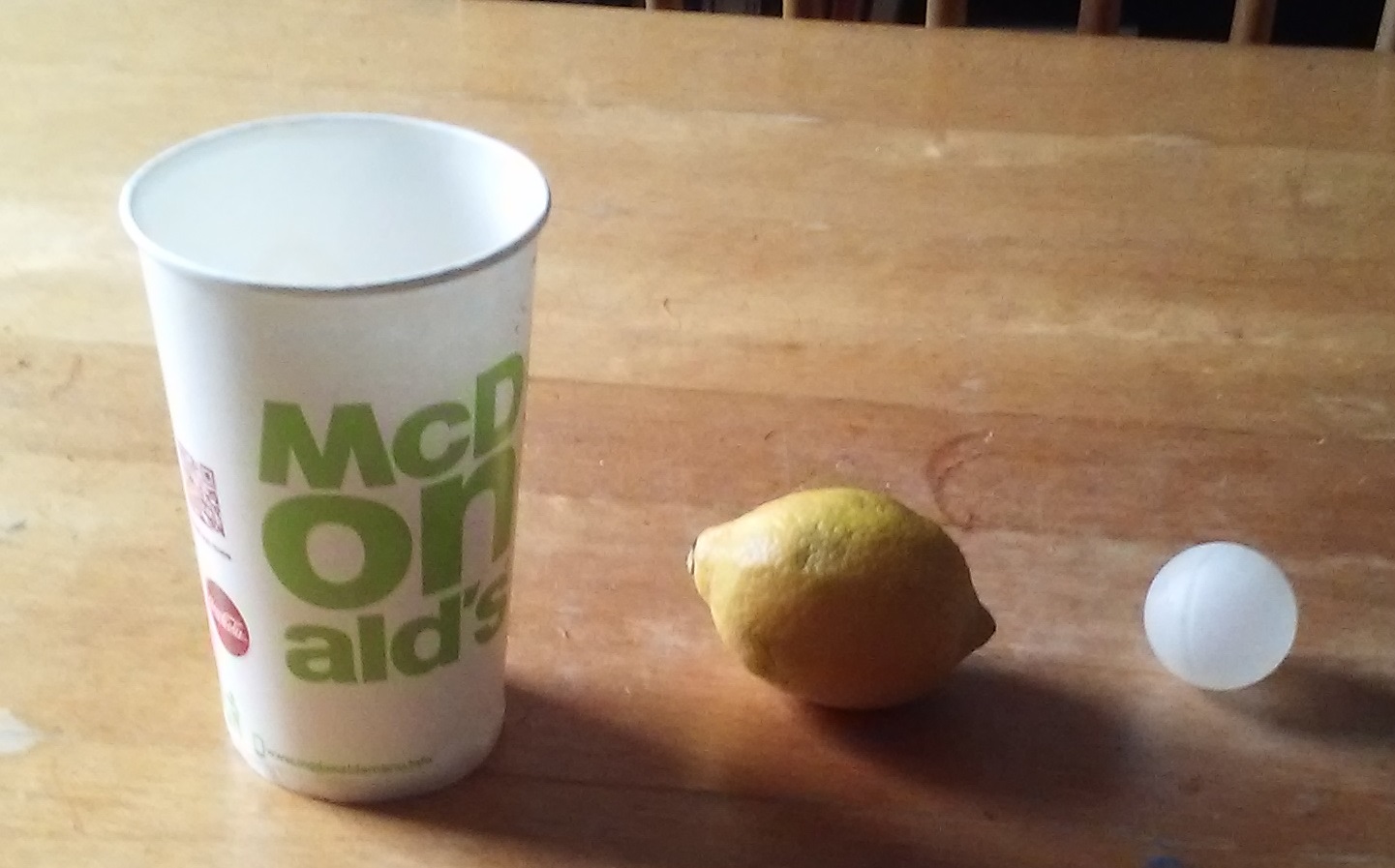I've confirmed the experiment, using a McD_n_lds paper drinks cup and a beer can hollow plastic ball of about $5\mathrm{g}$, of about the same diameter as a ping pong ball (PPB):
The observed effect depends largely on the cup being soft and permanently deformable (like an object made of blutack or playdough), so its collision with Earth is inelastic. A stiff, hard cup (made of steel e.g.) would not work the same way here. The inelastic collision of the ensemble causes kinetic energy of cup and water, post-collision, to be small.
The PPB bounces back quite high (from a quarter-filled cup) and the cup of water loses quite little water and doesn't really bounce at all. It's quite a sight to behold! A simple model can be set up a follows.
We can write with Conservation of Energy (the collision is clearly not elastic - as evidenced by the permanent deformation of the bottom of the cup):
$$(M+m)gH=mgh+W+\Delta Q+K_{M+m}$$
where:
- $M$ is the mass of water plus cup and $m$ is the mass of the PPB
- $H$ is the height from which the cup, water and PPB are dropped and $h$ is the rebound height of the PPB, after the ensemble hits the Earth
- $W$ the work done on the cup's bottom
- $\Delta Q$ heat energy dissipated by various non-conservative forces
- $K_{M+m}$ the kinetic energy of water and cup, post-collision with Earth.
Trouble is, we don't know the value of $W+\Delta Q+K_{M+m}$. Direct observation suggests it is small, so we can write:
$$(M+m)gH\geq mgh$$
Or:
$$\boxed{h \leq H\Big(\frac{M+m}{m}\Big)}$$
If $M\gg m$ we can further approximate:
$$h \leq \frac{M}{m}$$$$h \leq \frac{M}{m}H$$
I wanted to confirm experimentally the effect of $M$ on $h$.
Using a nearly empty cup, one half-filled and one filled completely I can confirm increased $M$ increases $h$.
Some further experiments are planned.

